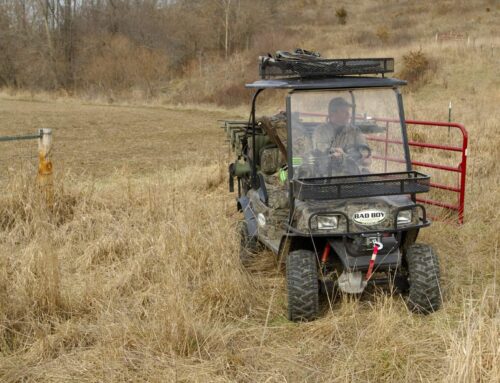Only a handful of cases of “Bullwinkle Disease” have been documented in whitetail deer, and we’ve covered most of them here on BIG DEER Blog.
Does and bucks with big, swollen snouts have been documented from Florida to Texas to Michigan. Ground zero for the disease seems to be Alabama, where the first known case of Bullwinkle (the disease is so new that scientists don’t have a technical name for it yet, but the common name fits for now) was documented in 2007.
Hunter Courtney Stanley (above) shot this nice buck with a swollen nose near Furman, Alabama in January 2015. And last month I received emails from two more Alabama men who shot the latest known cases of Bullwinkle bucks in the January 2016 rut.
Ed Hart killed this 9-pointer with a swollen snout January 13, 2016 in Elmore County.
This 150-pound buck was killed January 18, 2016 in Choctaw County Alabama by Bright Lunceford. It has the most severe and pronounced swollen snout of any of the afflicted bucks I have seen so far.
Experts believe the swollen muzzles result from chronic inflammation of tissues in the nose, mouth and upper lip. All of the cases studied by researchers in labs so far have shown similar colonies of bacteria in the inflamed tissues.
How and where deer acquire the Bullwinkle bacteria is unknown. “It’s not like anything else we’ve seen in deer,” said Kevin Keel, associate professor at the University of California–Davis school of veterinary medicine and the nation’s leading expert on the disease, and with whom I’ve corresponded on this topic numerous times. “This is an interesting disease because we’re not sure if it’s new. It might be something that’s always occurred in deer, but at such a low prevalence that maybe it was always there, we just didn’t know about it.
According to the Southeastern Cooperative Wildlife Disease Study (SCWDS) at the University of Georgia, which has done by far the most research on this malady, Bullwinkle disease has only been known to exist since 2005; no cases appear in 50 years of SCWDS files prior. Scientists are unsure of this is because the disease has only been around for 11 years, or because hunters from across the country can now share photos of their big-nose deer kills on social media and websites like BIG DEER, bringing more and instant recognition of the disease.
I would think the latter. Anybody know of any big-nose deer shot before 2005?
While Bullwinkle doesn’t appear to be lethal, Keel notes that deer with the chronic bacterial infection suffer weight loss that weakens the animals and likely hastens death by making them more susceptible to predation, being hit by cars, etc. Keel adds that since most cases of the disease are random, “It doesn’t seem to have any impact on overall populations.”
Number 1 question that we get: Is a deer with a swollen nose safe to eat?
In a word, NO. Scientists say the long-term nature of the infection could mean that bacteria are present in the blood and muscle of the meat, or a secondary infection could also have developed. Better to be safe than sorry.
I have anecdotal evidence to back that up in my growing database. Minnesota bowhunter Leif B. killed the big-nose doe below and told me:
I finished up de-boning the deer earlier this evening and noted that the ball joints in the hindquarters were both brown. The actual bone on the ball was a dark brown. I have never seen that before either, they should be white. So now I am very skeptical about eating the meat and probably won’t.
What to do if on the off-chance you or a buddy shoots a Bullwinkle deer?
Take lots of pictures. Keep the head on ice (do not freeze) and take it to the nearest office of your state’s wildlife agency or conservation officer. Hopefully the game warden will offer advice, though he may well have never heard of this or seen a deer so afflicted. To avoid wanton waste laws, tell the officer you are not going to eat the meat.
Next, email me the info and pictures and I’ll forward to the appropriate scientists and report the unusual kill here, and add it to our growing Bullwinkle database.











Never seen the swelled nose, BUT. I shot a deer that I hung in my shed overnight over a wheelbarrow I had transported it in from car to the shed. The next morning the were literally hundreds of “grubs” under the deers nose in the ‘barrow. Taking a cupful
of them to the SDWDS in Athens as I live there and know several of the researchers, they told me they were “nose bots”- the grub stage of an adult fly of some sort. They had seen many deer infested with them, but never in such numbers. I wonder if this could account in some way to this condition. Maybe a secondary condition? If Bots were a cause for Bullwinkle, you’d think there would be some maturing and exiting the sinus cavity. Just a theory.